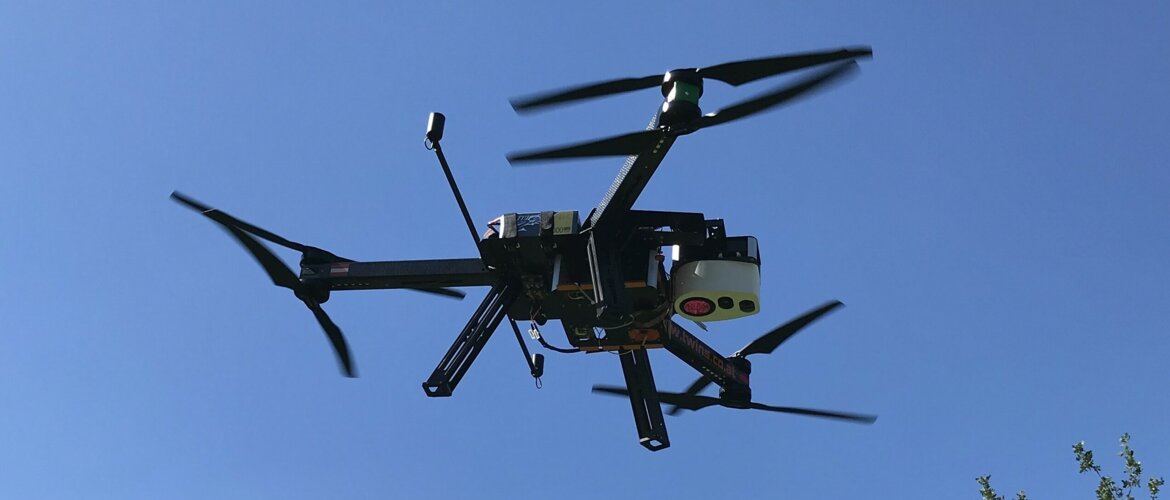
SpecDrone
Precision-controlled drones flying in pairs for mobile spectroscopic methane detection in the open path
Starting point
The development of unmanned aerial systems (drones) has progressed rapidly in recent years and is one of the fastest growing technology sectors of the decade. Drones as mobile sensor platforms have revolutionized the application fields for measurement applications. In addition to camera-based systems for inspection and surveillance, optical sensor technologies are frequently used for environmental monitoring.
Through the use of spectroscopic methods, harmful gases can be detected, with a single drone instrumented with a point sensor and manually or automatically searching for emission sources. One of the most commonly investigated gas components worldwide is methane, which is the second largest contributor to the greenhouse effect next to CO2. Methane emissions have versatile sources, with the largest contributions coming from the oil and gas industry and landfills. Identifying and assessing the sources requires the study of large areas, which is very inefficient to accomplish with point sensors.
By using open path spectroscopy, where a beam of light is stretched over long distances (~50m) between the light source and detector, the gases of interest can be detected along the path. This technology is commonly used for fixed installation systems.
Project goal
The project goal is to expand the applications of drones by improving flight precision and implementing swarm algorithms for cooperative control and orientation of drones. These developments will enable the use of gas sensors based on open-path spectroscopy to effectively scan large areas for emission sources such as methane.
The fusion of precise paired flight of two drones and open-path spectroscopy will enable numerous applications in the future besides methane detection, such as fire gas detection, industrial emissions investigation, or landmine detection, each of which aims to identify (environmentally) harmful emission sources to improve air quality and reduce environmental pollution.
Solution approaches
The following specific developments are aimed at achieving the objective:
- Design and instrumentation of communication interfaces between drones for the realization of coordinated pair flight.
- Development of innovative swarm algorithms for the cooperative control and orientation of the drones.
- Integration of a stabilization platform (gimbal) and the development of the necessary control algorithms, which act fused with the control strategies of the drone.
- Integration and instrumentation of suitable electronic components including a central processing unit (embedded computer) and a DAQ system as the hardware basis for executing the developed control strategies.
- Adaptation of a drone platform for the integration of the necessary system components in compliance with the maximum payload of 6 kg and maximum focus on energy efficiency of all components.
- Development of a methane detector based on absorption spectroscopy in the near infrared spectral range, which achieves a minimum range of 50m and a detection limit of 10 ppm*m as an open path setup.